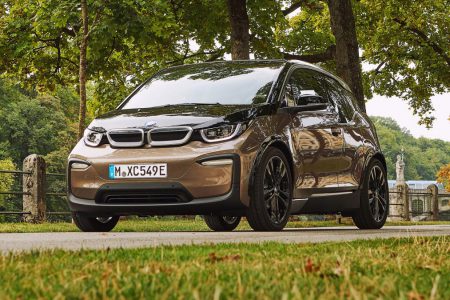From 2030, sales of new petrol and diesel cars in the UK will be banned. It’s a huge, game-changing moment that’s less than a decade away, so it’s no surprise that manufacturers are already turning to EVs in earnest.
From being a relative novelty to present nearly everywhere, electric cars are fast creating a revolution. So to make sure you don’t get left behind, we’ve compiled a list of all the EVs that are currently on sale in the UK.
We’ve not included the button number, flight-of-fancy hypercars but instead concentrated on the machines that we’ve driven at Autocar and that you could walk into a dealership today and test drive before putting down your cash (or in Volvo’s case clicking on ‘pay now’ in its virtual online store) before driving away.
Audi
E-tron
It’s probably no surprise that Audi’s first foray into the world of EVs had a very SUV flavour. Available in standard or rakish Sportback guise, the E-tron was deliberately designed to look as ‘normal’ as possible, so as not to put off buyers nervous about its high-tech underpinnings – although its door ‘mirrors’ that beam pictures to screens in the cabin are fairly futuristic. Comfort is the order of the day, with soft suspension and excellent refinement. All variants feature twin motors and four-wheel drive, while the larger-battery 55 claims up to 261 miles of range. The tri-motor S packs 496bhp, a 0-62mph time of 4.5sec and greater agility.
E-tron GT
Sharing its underpinnings with the Porsche Taycan, the E-tron GT is in many respects a better all-round bet than its cousin. Sleek four-door coupé styling helps it stand out, while on the move it effortlessly blends blistering pace and back-road agility with long-distance quietness and comfort for impeccable grand touring credentials. The 637bhp RS version steals all the headlines for raw performance statistics, but with up to 523bhp available in brief spurts of overboost, the standard E-tron GT is no slouch, claiming a 4.1sec 0-62mph time and a longer (298-mile) range. Better still, 800V electrical architecture means a full charge can be achieved in as little as half an hour.
Q4 E-tron
Audi’s entry-level EV is arguably its least convincing battery-powered offering. Based on the same MEB platform as the Skoda Enyaq iV and Volkswagen ID 4, it delivers arguably the same driving experience and range (up to 316 miles) yet charges you more for the privilege. Only the second Audi (after the R8 RWS) to offer rear-wheel drive, the Q4 is also available in twin-motor Quattro guise. Both are capable and composed to drive, but neither are inspiring, while the spacious interior feels no more special than that in the Skoda or Volkswagen. Still, the eye-catching Sportback version adds visual appeal, plus any Q4 can rapid charge at either 100kW or 125kW.
BMW
i3
It’s hard to believe the innovative and quirky i3 has been around for the best part of a decade now. Designed from the ground up to be battery-powered, the tall and narrow compact hatchback still looks and feels like nothing else on the road. It features a light and strong carbon-reinforced plastic structure, suicide doors at the rear plus a minimalist interior packed with sustainable materials – although it seats only four and its boot is cramped. Despite skinny tyres, it’s good to drive, particularly the more powerful i3s, but its age is starting to show through its maximum range of 192 miles and 50kW rapid-charging limit.

i4
On paper, the i4 is essentially an electric version of the new 4 Series Gran Coupé, but there’s more to it than that. It has been heavily re-engineered to take the 80.7kWh lithium ion battery and either one (rear-drive) or two (four-wheel drive) motors, while inside it gets bespoke digital instruments and infotainment set in a large curved screen set on top of the dashboard. Near 50:50 weight distribution front to rear means engaging and agile handling, while a slippery 0.24Cd drag figure helps the entry-level eDrive40 Sport deliver a 365-mile range. The 536bhp M50 will crack 62mph in just 3.3sec and is BMW’s first ever M-badged EV. Crucially, every i4 is capable of 200kW rapid-charging, which can add 100 miles of range in just 10 minutes.
iX3
Like the i4, the iX3 uses existing ICE architecture, in this case the X3. In fact, apart from a flush-fitting front grille and some natty blue trim inserts, it’s largely the same as its fossil fuel-fed cousin. Curiously, it’s rear-drive-only, the 282bhp motor driving the back axle via a single-speed transmission. Still, it’s as good to drive as the ICE X3s, while the typically low noise levels and adaptive dampers make it comfy. The EV drivetrain robs 40 litres of boot space, but at 510 litres, it’s still roomy enough and bigger than that of X3 PHEVs. There’s just the one battery available, but the 74kWh lithium ion pack can be rapid-charged to 80% in just half an hour.
iX
Few recent arrivals have stirred as much controversy as the iX, BMW’s flagship EV. Beauty has always been in the eye of the beholder, but surely even the most ardent BMW fan will struggle to put forward any praise for the slab-sided and awkwardly proportioned iX. Loosely based on the brand’s CLAR scalable architecture, it mixes the i3’s CFRP with aluminium, while the battery (a large 100kWh on the range-topping 500bhp xDrive50) is mounted low in the floor. Motors front and rear deliver four-wheel drive, while versions with that big pack claim an impressive 380 miles between charges. Air suspension means comfort is the order of the day, plus the interior is vast and lavishly finished – and at least you can’t see the exterior when you’re sitting in it.
Read more: AUTOCAR
It’s Time to Go Green!
If you would like to know more about Solar Panels and the PowerBanx range of home battery systems, and get a free instant quote, please complete our online form:

